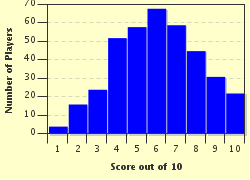Quiz Answer Key and Fun Facts
1. Ralph opens the family photo album to see a picture of his young nephew, Chris. What is a young llama called?
2. On the next page of the family photo album Ralph finds a picture of his father at work when he was much younger. What pastoral chore are llamas and some of their relatives often trained to perform?
3. Flicking through the family photo album, Ralph comes across a drawing made at a family reunion attended by his great-great-grandparents, who didn't have access to a photographer. Unfortunately, the picture doesn't include a representative of one South American branch of the family. Since we can see an alpaca, a llama and a vicuna, which is the missing camelid?
4. Ralph stumbles on a picture of one of his 'wild child' cousins, Verity the vicuna, in the family photo album. Although she runs wild, she can still expect to engage in which of these interactions with humans?
5. Ralph discovers a photo of one of his 'tamer' cousins, who belongs to a species now believed to have evolved as a domesticated form of the vicuna. Which New World camelid is pictured here?
6. The next picture Ralph's eyes fall on is his second-cousin Speedy. Speedy got his nickname because his streamlined shape contributes to his fast running speed, which is also assisted by his light weight. Speedy belongs to a wild species of camelid that is usually found at higher altitudes - the high range of the Andes called the altiplano, and the Patagonian region of Argentina and Chile. Which of these might be Speedy's sister?
7. Ralph's family photo album includes some pictures of objects for which some of his relatives have posed. Which country on the west coast of South America, which has a vicuna as its national animal, features one of Ralph's relatives on its national shield, pictured here?
8. Near the back of the family photo album, Ralph comes across some fairly gruesome pictures of skeletons. He is relieved to find that they are included because there are no living members of that family group, not on some ghoulish whim. Which of Ralph's ancestors, which was approximately the size of a goat (and not a fan of ravens, despite his name), has a skeleton on public display in the National Museum of Natural History?
9. Ralph has found yet another skeleton in the family closet! This is a picture of part of a museum display of a reconstruction of one of Ralph's ancestors, Titanotylopus. This name can be translated as 'giant knobby-foot', describing a distinctive camelid feature. What feature is this?
10. Ralph just can't get away from the fossils at the back of the photo album showing early members of the family tree. This photo shows two of them - the smaller Procamelus grandis skeleton is shown front and left, while the larger skeleton on the right and at the rear, with a long slender neck, is composed of fragments of which of Ralph's ancestors?
Source: Author
looney_tunes
This quiz was reviewed by FunTrivia editor
crisw before going online.
Any errors found in FunTrivia content are routinely corrected through our feedback system.

